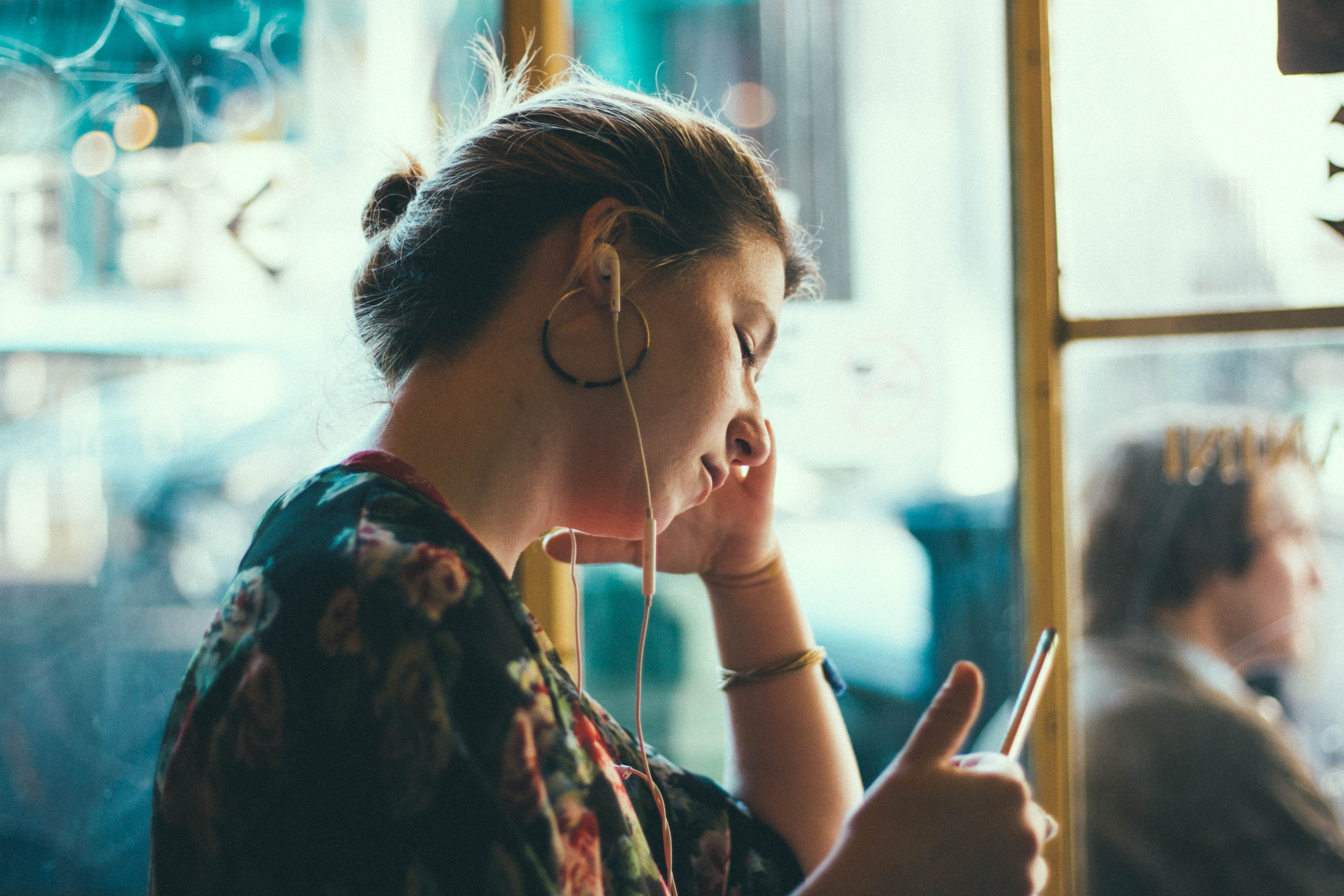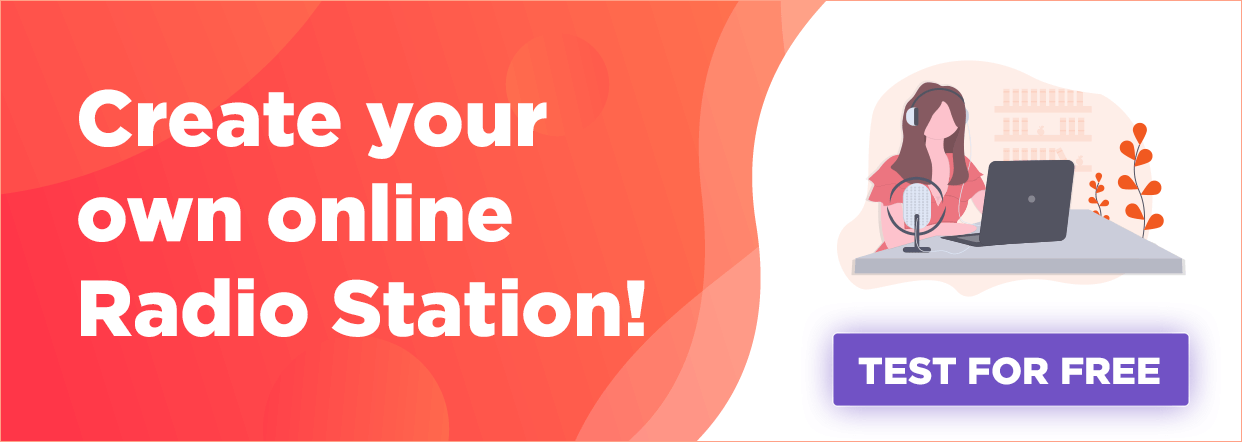If you’re new to the audio world, you may be asking yourself “what’s the difference between live radio and podcasts?“ The evolution of technology has revolutionised the radio world and has introduced new formats such as podcasts. Although they both share common ground, there are several distinctions that can be made between the two.
1. Pre-recorded vs Live
The first difference between live radio and podcasts is that, as the name indicates, live radio is broadcast live whereas podcasts are pre-recorded. There are, of course, exceptions to this.
It’s true that some radio stations have programs with pre-recorded content however, generally speaking, most content is broadcast live. This means there’s no way to edit a live radio show which adds more pressure for the hosts & DJs. It’s essential for them to prepare a script with broad outlines of the show in order to keep track of what needs to be said. This also makes them more prone to making mistakes, however it allows them to be more spontaneous broadcasting live.
Similarly, some podcasts are live with no post-editing before being uploaded. Nevertheless, most podcasts are indeed pre-recorded and edited before being released. The advantage being that podcasters can optimize their shows in terms of audio quality and content. For example, they can record their episodes multiple times, or over multiple sessions. They can also listen to their pre-recorded content and make adjustments, such as cutting sections or adding sound effects. Unlike live radio, podcasting allows you to remove any mistakes and ensure that the content quality is polished. On the downside, this can sometimes lead to a lack of spontaneity.
2. Target audience
Another difference between live radio and podcasts is their respective target audiences. As content types vary between these formats, they both target and attract different audiences. Generally speaking, radio stations attract a wider audience as they provide content that a larger group of people can relate to. This usually leads them to creating content that touches a wide range of topics. This increases the chances of listeners being interested, which therefore keeps them tuned in longer. By doing so, not only can they attract more people, but they also keep them engaged for longer periods of time.

Podcasts, on the other hand, tend to target a more specific set of listeners. We call this a “niche audience“. The topics of podcasts are (mostly) more specific than that of a live radio station. For example, you can find podcasts dedicated to practically any topic such as: psychology, food, pets, technology, true crime… (The list really does go on!)
Podcasters use keywords in order to increase the chances of people finding their content. Radios don’t have this advantage, which pushes them to vary their content to keep a maximum number of people hooked.
3. Time and access constraints
The third difference between live radio and podcasts is time and access constraints. In the radio world, listeners can choose to tune in at any time of the day. However, this means that they may arrive in the middle of a show. You may notice that DJs and hosts tend to repeat certain elements such as the name of their show, contact details etc… this is to keep everyone up to speed if they’ve just started listening.
Radio programs follow an allocated time-slot, so for example you can have a morning show from 7AM – 10AM. This gives listeners a rough guide of when they can catch your shows, even if they aren’t immediately available at 7AM, they can tune-in on their way to work between 8:30AM-9AM.
With podcasting, listeners can start each episode from the beginning. They can choose when and where they want to listen, and even listen to one episode in multiple sections. People usually don’t even start with the first episode, they will generally listen in a random order. This is why it’s important for podcasters to always make the 1st minutes super interesting in order to grab the listeners attention. Each episode should also start with the podcast’s basic information (topic, host name, any guests?)
Don’t forget that the lifespan of a radio show ends after being broadcast on air (if it hasn’t been recorded). However, once a podcast has been uploaded it stays online forever (unless the creator decides to remove it from streaming platforms.) This means that listeners can continue listening to their favourite episodes with no time constraints.

4. Listener interaction
The possible listener interactions with live radio and podcasts is also very different. As podcasts are pre-recorded and can be listened to at any time, there is no direct interaction between the listener and podcaster. The conversations you listen to are in the past and, whilst you listen, the creator is probably already recording a new episode. The audience doesn’t get to participate or become part of the story as they are simply bystanders.
Live radio, on the other hand, is a great way to create a connection with your listeners! It’s extremely common for radio hosts to allow listeners to call in and take part in the live show. This could be to share their opinion on a particular topic, as part of a game, or even to share an experience or anecdote in relation to the subject. It’s a great way for radio stations to be closer to their community, and have them participate in their live shows.
There’s also a sense of community that is built around live radio. You know that you are listening to something at the same time as hundreds or thousands of other people! You are all part of one moment, together. This isn’t at all the same as podcasting, where everyone listens to episodes on their own, at different times.
5. Licensing and regulations
The last major difference between live radio and podcasts are in regards to licensing and regulations . You may have noticed that podcasts are lacking when it comes to top-chart music. For a podcaster to use music in their show, they would need permission from the artist. They also have the possibility of using music that is under public domain, however this doesn’t leave a lot of choice.
Radio stations on the other hand can easily purchase the necessary license for broadcasting commercial music. As rules and regulations vary from country to country, we invite you to take a look at this article on our blog for more information on music licensing.
Both formats have similarities and differences, and can easily coexist side by side. For example, if you run your own radio station you can record your live broadcasts and make them available to listen to as podcasts on your radio website.
There is also a lot of equipment out there that can be used for both live radio and podcasts, such as the RodeCaster Pro! Check it out in our video below:
If you’re someone who’s main focus is listening to music, you’ll probably find that the radio format is best. However, if you’re more interested in spoken content regarding a specific topic, you may find that podcasts are the way to go.
